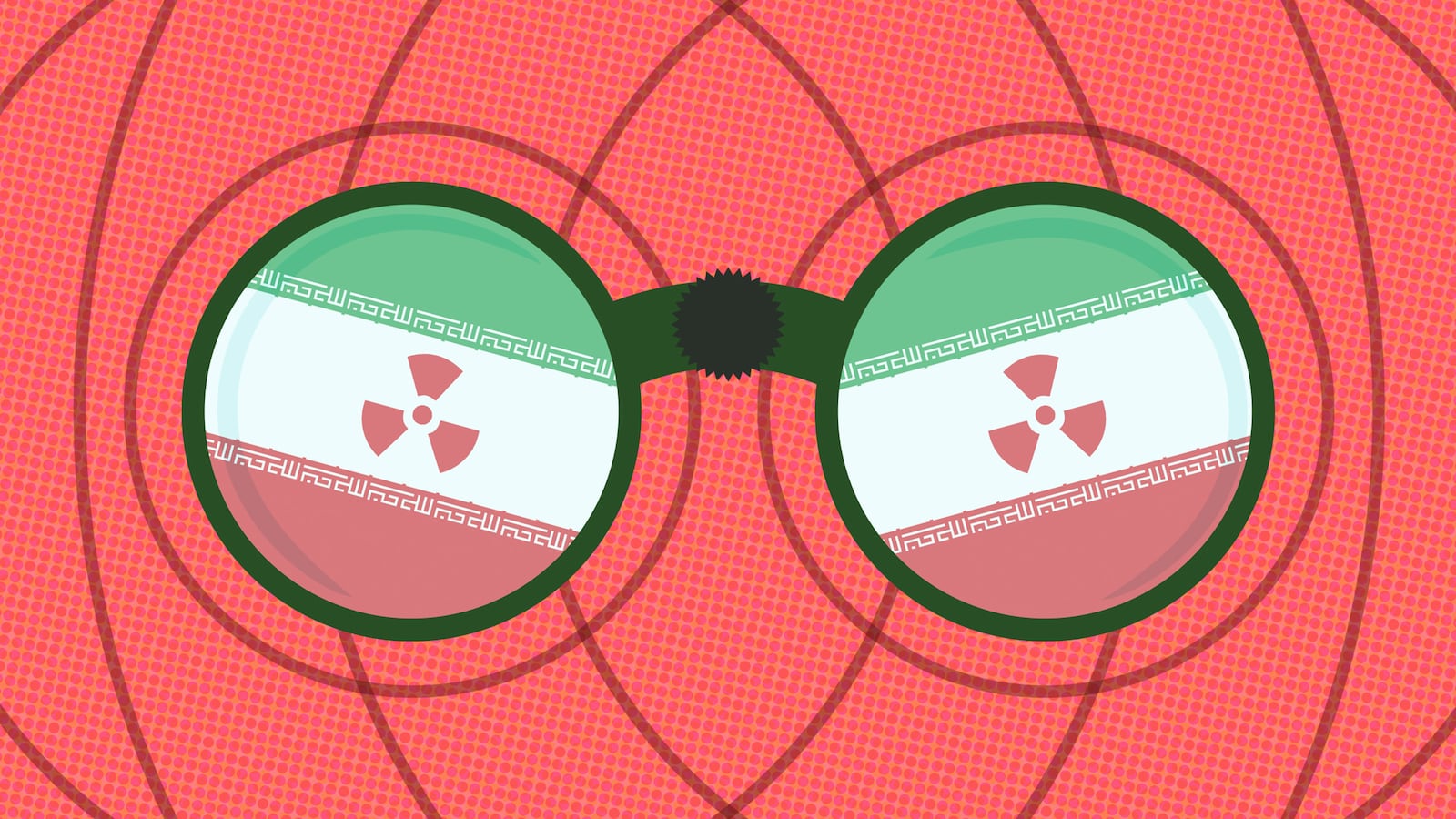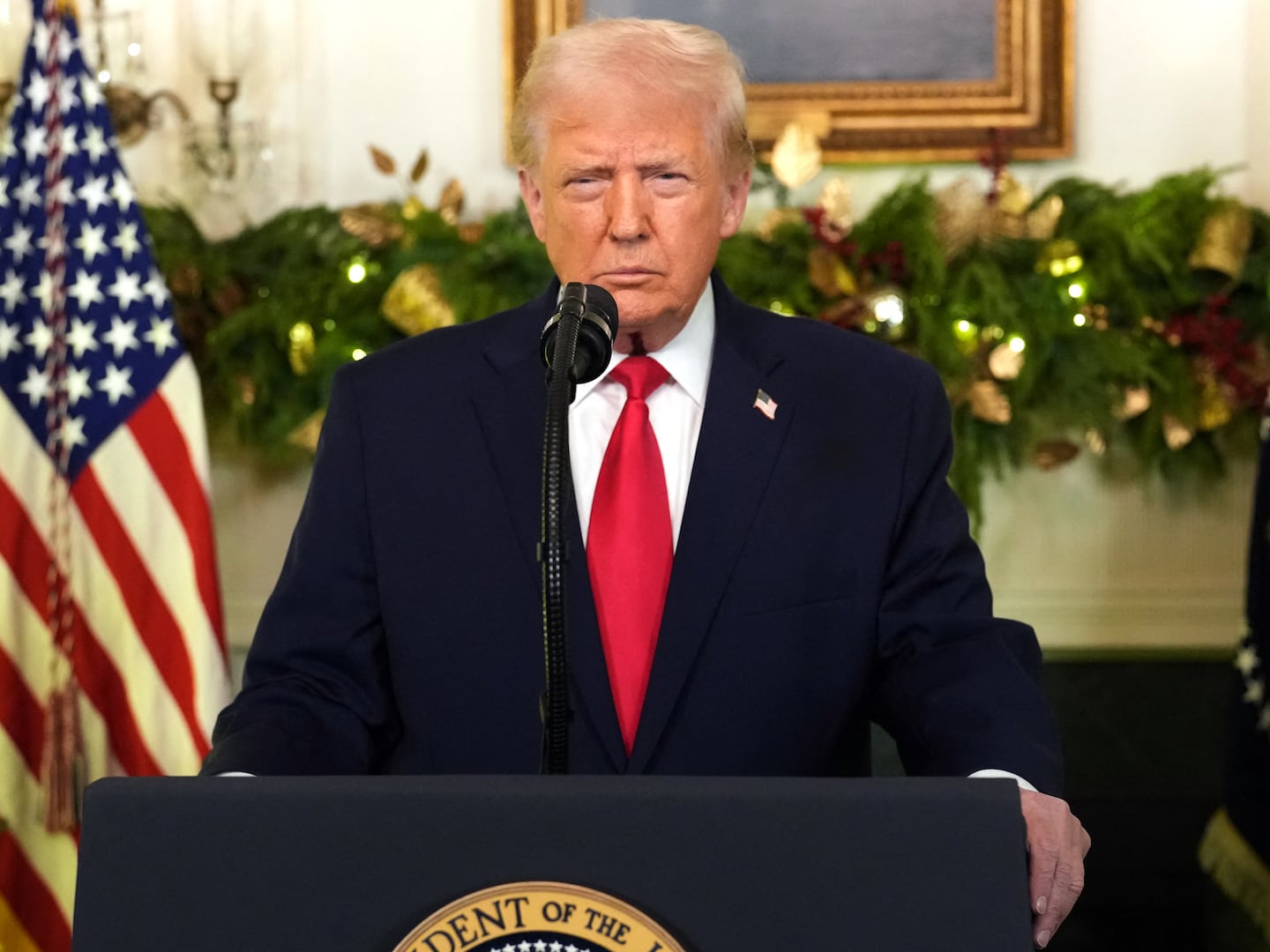The Obama administration can make all the nuclear deals it wants. Iran will still cheat and keep working toward a bomb, skeptics say. But cheating is harder than it seems, due to the development of new surveillance and nuclear verification technologies.
The International Atomic Energy Agency can field a sophisticated array of gadgetry to detect if Iran is departing from its obligations: fiber-optic seals on equipment that can signal the IAEA if they are cut; infrared satellite imagery that can track down hidden reactors; environmental sensors that can detect minute signs of nuclear particles; hardened cameras built to withstand tampering and radiation.
To that list, the West’s intelligence services can add even more: sophisticated cyber espionage operations; an array of seismic and acoustic sensors; and networks of old-fashioned, human spies.
As a deal nears—another deadline looms this week—the Obama administration’s allies are emphasizing these technologies as evidence that the United States will be able to detect Iranian cheating, and in so doing, be able to deter such action.
“This will be a state-of-the-art verification regime, with sophisticated sensors, seals, cameras, coupled with comprehensive audits, interviews, inventories, and a controlled import channel for all Iranian purchases of nuclear-related technology,” said Joseph Cirincione, the head of the Ploughshares Fund, a WMDs nonproliferation organization. “If Iran tries to break out, sneak out or creep out of this agreement, we will catch them.”
“Currently, Iran often only allows the IAEA to use some of the older and more time-consuming technologies,” a U.S. Department of Energy official told The Daily Beast. “One of [the] key components of the [interim] framework [agreement] we reached with Iran in Lausanne was an agreement to allow the IAEA to use more modern, more efficient, and more timely safeguard technologies.”
The specific “modern technologies” that will be used in Iran continues to be a point of negotiation, and some of the most advanced methods may not be permitted in the terms of the final deal.
The negotiations reached a breakthrough over the weekend, Bloomberg reported, after the IAEA said it could provide a previously promised investigation into the possible military dimensions of Iran's past nuclear program by December—a key issue that needed to be resolved. The negotiating parties are working on two lists of Iranian sites—one list of declared nuclear-related sites, and a second list of sites for which IAEA inspectors are raising questions.
Iran has already been caught overstepping the bounds of its interim nuclear deal with the great powers (although the U.S. has played down the violations). And technology is not a replacement for the deductive abilities of a trained, experienced nuclear inspector with access to nuclear facilities or suspected sites as they require.
“No amount of technology can be a substitute for anytime/anywhere inspections. The world’s most veteran scientists have always said that they won’t be able to verify a deal without those kind of inspections,” said Omri Ceren, managing director at The Israel Project, which opposes the terms of the current deal that the Obama administration is widely expected to reach with Iran. “The White House caved. Now they want to pretend that this was the plan all along, and that a technological quick-fix can replace what everyone knows is the bare minimum—unfettered access for the UN’s nuclear watchdog.”
But the improved capabilities can aid international efforts to detect any cheating.
The IAEA employs over 100 different tools in day-to-day monitoring and verification operations, said Andreas Persbo, the executive director of Vertic, an international agreement verification think tank in London.
“With the present technologies that will be applied, you introduce an extremely fine level of monitoring into Iranian facilities. You could be very assured that the IAEA will detect even marginal, inconsequential breaches or movements from what the Iranians declare that they will do,” Persbo told The Daily Beast. “That of course is not a guarantee that the Iranians won’t cheat anyways. All the monitoring in the world can’t prevent that.”
Advanced spying and monitoring technologies are most useful for figuring out whether Iran is cheating at secret, undeclared nuclear facilities. One tool the IAEA has access to is commercial, high-resolution satellite technology that can give them imagery of locations all across Iran.
“That capability has revolutionized the ability to find things that were once hidden in remote locations,” said Tom Shea, who worked at the IAEA for 24 years and helped establish nonproliferation safeguard procedures.
Satellites—like DigitalGlobe’s WorldView-3 orbiter—can be used to take photographs in the shortwave infrared spectra, for example, detecting a clandestine reactor that is putting off heat. Electro-optical and radar satellites could help complete the picture. (That’s one of the ways that the U.S was able to find Iran’s previously secret underground nuclear facility in 2009.
Another tool for finding clandestine sites is environmental sampling, which has improved to the point where inspectors can identify infinitesimally minute particles to find hidden nuclear facilities or sniff out misuse at declared facilities.
“You can detect individual atoms, very small samples, so it’s virtually impossible to hide that you’ve been doing nuclear activity in a room,” Persbo said.
And by using remote environmental technologies, the IAEA can engage in “wide area monitoring of ambient air and the ground… they can detect [nuclear activities] without going directly into certain areas,” said Daryl Kimball, executive director at the Arms Control Association.
For known facilities, inspectors can set up sensors and monitors to flag suspicious activity.
“In addition to imagery and other tools, I suspect that the collection will rely on… MASINT, measurement and signatures intelligence,” said Michael Hayden, the former director of the National Security Agency and the CIA. MASINT involves the amassing of seismic, acoustic, electromagnetic, multispectral imaging, and other data to find signatures of hard-to-detect phenomenon. Even trace amounts of waste products are monitored.
“This discipline collects naturally occurring phenomenon that can be used to detect significant events, particularly those related to weapons development. I suspect that we will have a great number of sensors at known Iranian nuclear locations as part of the agreement,” Hayden added.
Skeptics point to the failure to contain North Korea’s nuclear program after it signed an agreement to dismantle its nuclear weapons program in 1994. In 2002 the North Koreans removed IAEA monitoring equipment from its nuclear facilities, then expelled IAEA inspectors. The next year, it declared that it was in possession of nuclear weapons.
But in the years since, extraordinary improvements have been made in nuclear monitoring and verification technologies, creating a wide array of options if a deal is reached.
The IAEA could use online enrichment monitors, which provides real-time assessments of the enrichment levels in nuclear facilities to the IAEA’s headquarters in Vienna. Sophisticated fiber-optic seals can be placed on equipment that is not to be used, set to alert the IAEA if the seal is broken.
And the IAEA has a so-called “Next Generation Surveillance System,” which could be connected to Vienna through the Internet, sending a continuous, encrypted feed of images. Those pictures could indicate, for example, whether individuals are accessing stored centrifuges in an unauthorized way. “The NGSS can store data onboard and transmit authenticated data to a computer located elsewhere for analysis,” a Department of Energy official said.
Then there are the actual spies: In the early 1990s, Shea said, the CIA apparently passed intelligence to the IAEA showing North Korea cheating on its nuclear nonproliferation treaty obligations, an initial action that led to the IAEA becoming a funnel for intelligence information.
The agency isn’t a source of intelligence for national governments, but does serve as a recipient, encouraging countries to bring them information that would help with their monitoring and verification goals.
“Anything the U.S. intelligence community has, the French, the British, the Israelis, the Russians—can be confidentially transferred to the agency to help them give them a clue,” Kimball said.
Of course, those spy agencies have been monitoring Iran’s nuclear program for years.
The U.S. intelligence community has been engaged in overhead surveillance of Iran, evidenced by the Iranian government’s 2011 capture of a stealth drone used for CIA operations.
The United States military has been working for decades on technologies to detect and make images of underground structures from above. The Pentagon’s Defense Intelligence Agency runs something called the Underground Facilities Analysis Center, reported Politico’s Michael Crowley, which uses high-tech equipment to see through solid objects and map out underground structures and layout.
And it is widely known that the United States and Israel worked for years on a cyber espionage program—at times known as “Olympic Games”—to monitor (and occasionally sabotage) the Iranian nuclear program. The U.S. might not unleash another cyberweapon like Stuxnet—which destroyed centrifuges at the Natanz enrichment facility—if an agreement with Iran is in place. But the chances of American snooping on Iranian nuclear scientists and policymakers start at 99.9%, and go up from there.
Of course, it’s impossible to know all of what intelligence agencies are working on, since so much of is classified. What is known is that the vast portion of these measures will remain out of the public’s view. The CIA did not return a request for comment.
And naturally, monitoring and verification technology is no substitute for on-the-ground inspectors. How much access they will receive is one of the points of contention left in a potential nuclear agreement.
Former CIA director Hayden is among those who believes that inspectors need to have access anytime, anywhere they see fit.
“What I am more concerned about is fragmentary intelligence, perhaps collected through human or electronic sources, that suggests secret activity at secret locations,” Hayden told The Daily Beast. “In these cases, only ‘anywhere anytime’ inspections by the IAEA will suffice for answering critical questions. That is why I have routinely said that absent an invasive inspection regime, American intelligence cannot guarantee Iranian compliance with an agreement.”
Following an agreement between Iran and the world powers, implementing the deal and its monitoring technologies would be the next step.
Even as the negotiating teams work on finalizing details, a senior administration official told The Daily Beast that there is already “prudent planning underway” to implement the deal. “Given the many details and elements of any implementation plan, we have been doing some advance planning. In that planning, we are looking at all aspects of implementation including how the [U.S. government] would be organized,” the official said.






